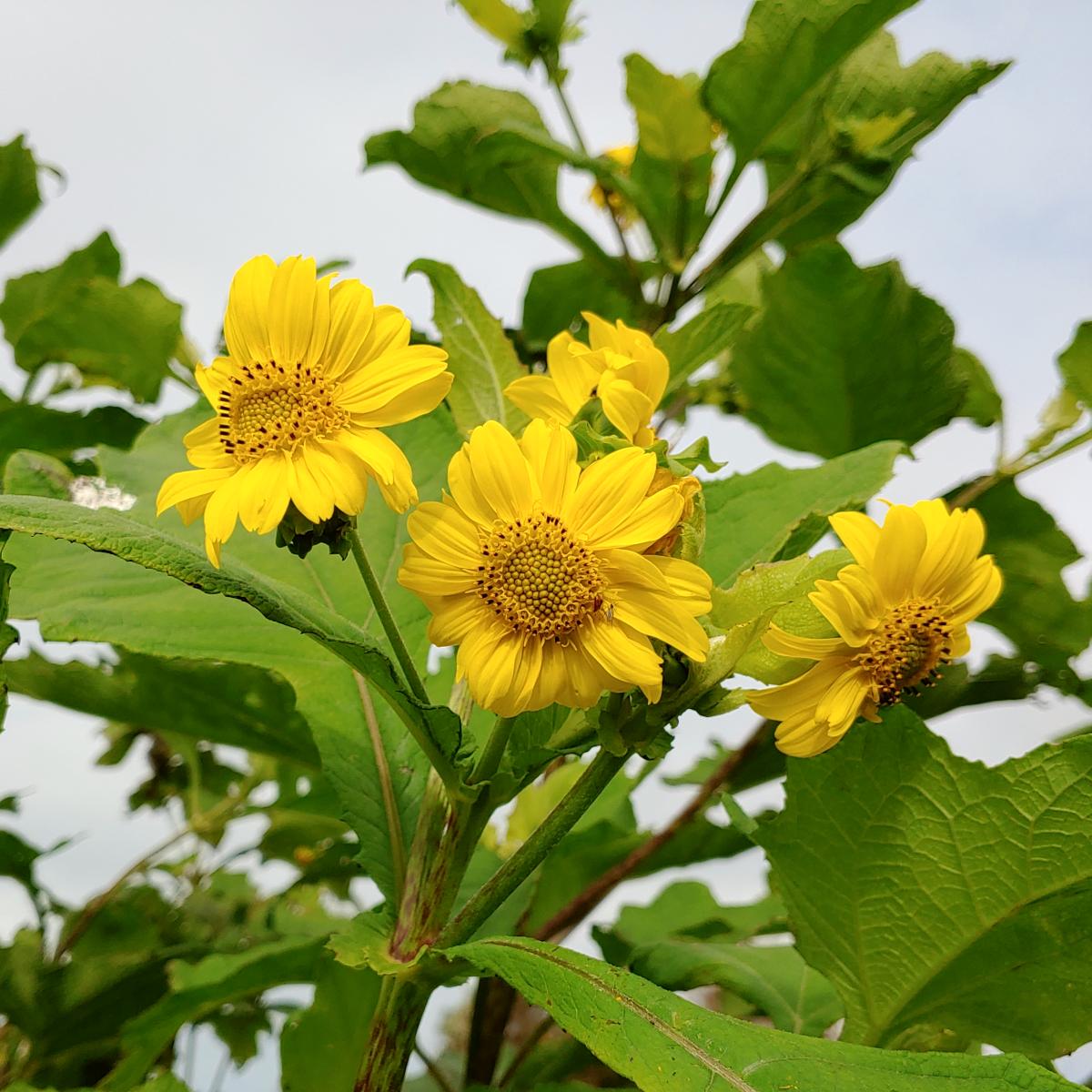| Yacon wild relatives information |
| This variety is offered intermittently and in small quantities. |
| There is no history of edible uses of this plant and it could be toxic |
Smallanthus maculatus is a relative of yacon, native to the cloud forests of Central America. It may be useful in yacon breeding but is not really itself an edible plant. Both the leaves and roots were traditionally used as an herbal remedy for abdominal pain, so it doesn’t appear to be dangerous to consume in small amounts, but I don’t think anybody has really tested it as a food. Unlike yacon, it does not make storage tubers. It makes a large cluster of thickened roots, much like yacon produces before they begin to bulk up. S. maculatus looks very similar to yacon, but grows taller, has very attractive green and purple mottled stems, and larger flowers. It does not flower until fall in our climate. It may be of interest as an ornamental. Climate tolerance is similar to yacon, but it is more difficult to store over winter, since it does not produce crowns in the same way as yacon.
This species does not have large pieces of crown rhizome like yacon. These propagules are sprouts with a little bit of basal rhizome. They will need to be potted and treated gently until they show good root formation.
Seeds are a real pain to germinate; they have very hard, thick shells compared to yacon and should be chipped or filed for best germination, which is likely to be less than 20%. I have obtained seed by cross pollinating with yacon, but none of it has germinated yet. Self-incompatible, so you need at least two different clones in order to produce seed.
I have only been successful at collecting seed about one year in three and the amount of seed that I collect is usually pretty small.
| Availability |
|---|
Only logged in customers who have purchased this product may leave a review.


Reviews
There are no reviews yet.